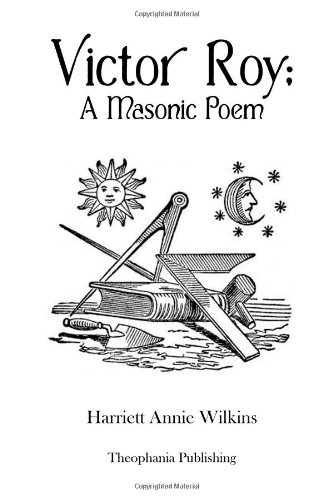
Product Description
An anecdote appeared some time ago in the pages of “The Craftsman” which gave rise to the ideas embodied in “Victor Roy.” It is not a story of profound depth. Its aim is not to soar to Alpine heights of imagination, or to excavate undiscovered treasures from the mines of thought. It is a very simple story, told in very simple words, of such lives as are around us in our midst. It tells of sorrows that are daily being borne by suffering humanity, and of the faith that gives strength to that suffering humanity to endure “seeing Him, who is invisible.” All lives may not see their earth day close in sunshine, but somewhere the sun is shining, and all true cross-bearers shall some day become true crown-wearers. The following pages have some references to that Ancient Order which comes down the centuries, bearing upon its structure the marks of that Grand Master Builder, who gave to the visible universe “the sun to rule the day, the moon and stars to govern the night;” an Order which, like these wondrous orbs, is grand in its mysterious symbolism, calm in its unvarying circles, universal in its beneficence. We are told of a poor weary traveller who had plucked a flower. The shadows of a grand cathedral lay before him. He entered; its architecture charmed him, its calmness refreshed him. Approaching a shrine he laid his flower upon it, saying: “It is all I can give; it, too, is God’s work, although gathered by a feeble, dying hand.” A priest standing near looked upon the flower and said: “God bless you, my brother, heaven is nearer to me.” So, if by the perusal of “Victor Roy” one ear hears more distinctly the Apostolic declaration, “Pure religion is to visit the fatherless and widows in their affliction,” or if one poor sinking spirit is strengthened, as Longfellow says, to “touch God’s right hand in the darkness,” the wishes of the Authoress will be fully accomplished. Harriett Annie Hamilton, August, 1882.

